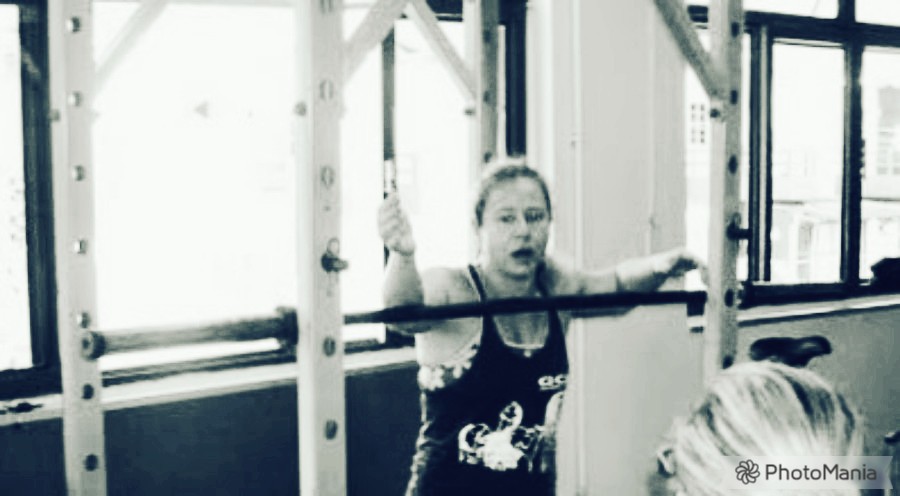
Before I go back to program building specificities and individuality, let me introduce the difficult, unanswered and eternal questions concerning sports, movement and talent:
- Are sports just for the talented?
- Are movement cultures just for the “naturals”?
- How do you deal with those with skill acquisition disadvantage?
- Does talent exist?
First of all, talent does exist but there is no consensus concerning what it is made of. According to the theory of deliberate practice it is pure nurture: experts are built, not born. We know that’s not the whole story. As always, it is an interplay of nature and nurture. Some talent screening programs are crude and select based on anthropometric data and a few performance drills. Does this work? Yes: with a huge pool like China has, it does.
The collegiate coach deals with individuals pre-selected for talent and skill: they are placed under his supervision because they were selected by the institution. Some coaches’ job is to conduct that selection based on criteria his institution adopted and his “educated eye”.
The commercial gym coach or the high school PE teacher faces a whole different set of problems:
- People who want or need to acquire skills but clearly have difficulty in doing it. The coach doesn’t know where the difficulty comes from.
- Kids that can’t find a sport or movement practice they feel comfortable with because they seem/feel “clumsy”.
Before we move on to possible ways to handle that and productive approaches, let’s look at these videos:
藤井惠 Megumi Fujii on Twitter
腕十字うでじゅうじ #セコンド #の #指示通り #マウントから腕十字。 #からの #ハイタッチ。 #覇彌斗先輩に勝利! #StraightArmBar https://t.co/f8M5XTpA7l
This is Megumi Fugi’s ten month old daughter practicing the arm bar with her dad. I follow their Twitter account since the toddler started being featured on a regular basis. At ten months, a child is usually developing their first locomotor skills: they are mastering the walk, the vertical climb and other complex gestures. Among the complex gestures this little girl is mastering are fighting ones. Fifteen years from now, if she becomes the fastest and most lethal MMA fighter of all time, what are we going to say? What kind of talent is this? How much nature and how much nurture are at play? The theory of deliberate practice will fail us: children don’t have certain executive functions fully developed. Delayed reward is impossible for them to comprehend. They play. When you grow up in a fighting training center, fighting is play. These are little girls training combat sports:
Children learn skills faster than adults but retain less. Nobody knows how much is actually retained and at what level. The story of Johanna Quass, the oldest competitive gymnast of all time, sheds some light on that. I always thought she was a competitive gymnast all her life. Wrong: she did train as a child but her athletic career was interrupted for decades while she raised a family. She resumed competitive training at 72 years old with her husband as her coach:
Live your Life ||Johanna Quass||
Johanna Quaas is living proof that age is just a number as the 92-year-old grandmother is still competing as the world's oldest gymnast. Quaas, who was born in Germany, took part in her first gymnastics competition at the age of 10 and has been hooked on the sport ever since.
This is a case of someone whose identity “contains” the execution of that set of complex movements, whether in an organized sport setting or not. She could only feel integrated as a gymnast.
eternal youth 93 year old gymast Johanna Quaas graceful- Voices of Spring Waltz by Johann Strauss II
eternal youth 93 year old gymast Johanna Quaas graceful-Voices of Spring Waltz by Johann Strauss II
Think about your school years. How did you do with the sports or games available? In my school we had a variation of handball and then soccer. I was a disaster: my eyesight is bad, I wore glasses and either I wore them and broke them, or I didn’t and couldn’t see the ball. The playground games weren’t that great, either: my arms are too short, so I couldn’t play “hand swing” like everybody else. It was sad. Hide and seek was worse. But I was good at leap frog. When I was screened for competitive sports, I was chosen by the gymnastics coach, by the track and field coach and by the fencing coach. Except for gymnastic, my anthropometric measures were not at all indicative of talent for those sports: short limbs? Really? Oh, but I was more than good at fencing. Why? I don’t know. Nobody does.
Years later I heard from two national team Olympic lifting coaches that they had rarely seen someone with my power and strength output and that I was wasted in any other sport. Maybe that is what made me a good fencer: power. In theory, I would have made a better gymnast but I don’t like jumping over things and I was always afraid of those asymmetric bars. I could follow my dad over rocky coasts but jumping is not my thing. So, what is talent?
When I became a powerlifter, I think I was the oldest woman to break an all-time record. Why? I don’t know.
When people hire me or ask me to coach them for strength sports, sometimes I can see that no matter how much they want that and how creative I am, they won’t be good at it. There’s something missing in the hardware. What should I tell them? My choice: I tell them to focus on their pleasure and individual benefit. Compete, sure, but only for fun.
I do stand by my position, however, that every single person has the birth right to move and adopt ritualized and symbolic ways of moving and expressing themselves. They all have strength because strength is not one physiological trait: it is a variety of phenomena that we lump under the concept of strength.
Over-emphasizing talent and dividing people into those who have and are, therefore, allowed into the playground of sport, and those who haven’t and are excluded is wrong at the school level, at the “generic” gym level and only right at elite competitive sport level.
Routledge Handbook of Talent Identification and Development in Sport
Talent Identification in Sport: A Systematic Review









